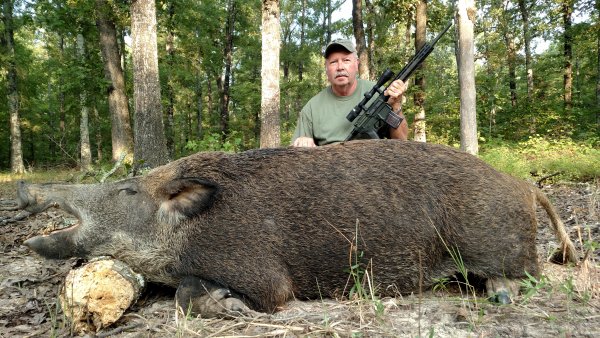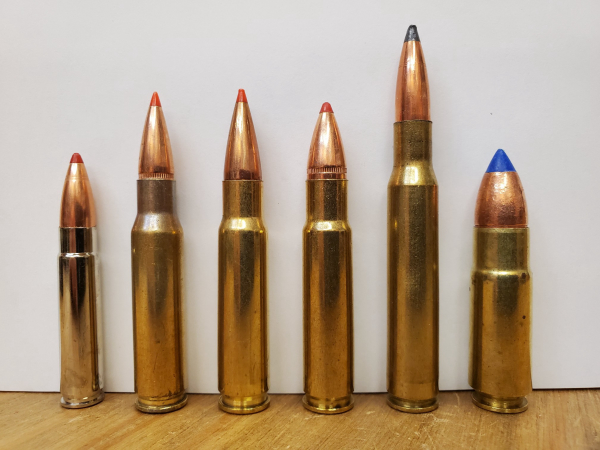
Now that we’ve discussed proper shot placement to kill a hog effectively let’s look at suitable calibers. After guiding hunters to hundreds of hog kills, I see the caliber issue in two categories—those ideal for seasoned, experienced hog hunters and those for the most inexperienced beginner. An experienced hog hunter knows precisely where to place the shot from any angle, has the patience to wait for the proper shot angle and doesn’t get excited and have to deal with buck fever. Think of this person as being much like a special ops sniper. However, based on my experience from guiding many inexperienced hog hunters, they are much the opposite. They typically get excited and want to quickly shoot the hog anywhere, thus creating a lot of work for the guide to clean up the mess they made. Here’s my opinion on suitable hog hunting calibers for these two categories of hunters.
Experienced hunter:
The experienced hunter can cleanly kill hogs with virtually any caliber from .223 to as large-caliber as they can effectively shoot well. However, the smaller the caliber to less margin for error, and as we all know, “Murphy” is always out there trying to make the best plan go awry. I’ve killed quite a few hogs with the .223/5.56 and with precision shot placement. It certainly works just fine, but the key here is “precision shot placement”. There simply isn’t much margin for error with calibers shooting bullets under 6.5mm, and even then, I’m a big believer that.30 caliber is the minimum since you never know when you will be forced to take a marginal shot. And no, the .300 Blackout doesn’t qualify and isn’t a suitable hog caliber when you get that rare opportunity at a 250# plus trophy boar.

Calibers I like are 300 HAM’R, .308 Win, .30-06, .338 Fed, .358 Win, and .458 SOCOM. I’m also a massive fan of the 9.3x62 with 286gr Nosler Partition bullets, which are overkill for even the largest boar but will always get the job done with any reasonably proper shot placement.
Inexperienced hunter:
When guiding inexperienced hunters who often only hunt once or twice a year, I want all of the margins for an error I can get. Right from the start, I’m planning on them getting excited, rushing, and placing the shot poorly. Therefore, the largest and most terminally effective caliber that the average shooter can shoot well is the best choice. Being able to shoot the caliber of choice well is paramount. I see big tough 200-pound guys that are scared of the recoil of a .30-06 while my 120-pound wife Joyce is perfectly comfortable shooting a .375 H&H. Besides the perceived recoil to the shoulder, I’ve seen excessive muzzle blast make people flinch too. I hate muzzle brakes and wouldn’t have one on any rifle I own. Just the opposite, the use of a suppressor reduces felt recoil and mitigates muzzle blast down to levels that rarely hurt a person’s shooting. I consider the popular .308 Win as the minimum caliber for an inexperienced deer or hog hunter. As a guide, I’m always relieved to see an amateur hunter show up with a .308 Win, .30-06, .338 Fed or .358 Win.
Caliber selection is one thing, but where the rubber meets the road is with bullet selection, we’ll discuss this in the next installment.